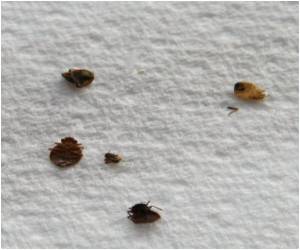
The reddish bugs are on the rise after largely disappearing in the 1950s, and attempts to kill them now cost the United States hundreds of millions of dollars per year, including up to $40 million in New York alone.
"Inbreeding gives bed bugs an advantage in being able to colonize," said entomologist Coby Schal of North Carolina State University, who studied the genetics of bedbugs in multistory apartment buildings in North Carolina and New Jersey.
He found most of the bugs in each individual apartment were related, and each building showed low genetic diversity, indicating that they all came from the same stock.
Schal and colleagues also studied 21 bedbug infestations from Maine to Florida and found that nearly all came from single rooms within homes.
"A single female that has been mated is able to colonize and start a new infestation. Her progeny and brothers and sisters can then mate with each other, exponentially expanding the population," he said.
Advertisement
While many of the bugs were related within buildings, researchers found that there was a high level of genetic diversity across different areas of the eastern United States, indicating that the bugs are coming in from many different places domestically and abroad.
Advertisement
Other factors for the spike in bedbugs in recent years include more international travel and the development of resistance among bedbugs to current pesticides.
Previous research has suggested a 500 percent boost in their numbers over the past decade.
"Over 95 percent of pest control agencies reported bed bugs as a priority in 2010, thus superseding termites as the number one urban pest," said Rajeev Vaidyanathan, associate director of Vector Biology and Zoonotic Disease at the research group SRI International.
While the blood-sucking parasites do not transmit disease, they can cause allergic reactions, itching, and psychological harm to homeowners and residents.
Source-AFP









